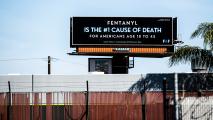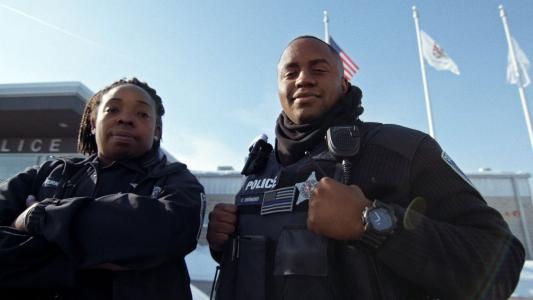For several years, especially since the beginning of the Black Lives Matter movement, people have been rethinking how the police operate, especially in low-income and minority neighborhoods. Police tactics that have been commonplace for decades (stop-and-frisk, zero-tolerance, “policing for profit,” and paramilitary SWAT raids) have come under fire throughout the country.
Many see this as a problem of over-policing, blanketing poor communities with cops who harass people on the street for minor offenses.
But others are beginning to see a problem of under-policing. There is growing concern about the recent national rise in murders, which has disproportionately hit minority communities, while data collected by the Washington Post shows that police are significantly less like to solve murders of African-Americans to begin with.
Even though crime is much lower than in the 1990s, many experts argue that cities still need substantially more police. There is comparatively a lot more murder in America than other rich countries, but we actually spend comparatively less on policing, on average, than most of Europe.
So there seems to be a Catch-22: minorities are disproportionately likely to be victims of crime, but also disproportionately likely to be victims of police harassment.
Is the answer more police? Or less? Or is there another option?
The Paradox of Trust
The over-policing argument rests on well-known facts about the huge number (and racial disparity) of stops, frisks, drug arrests, citations, fines, and car searches made by police in poor communities. Critics of over-policing say that this constant barrage results in unnecessary encounters with the criminal justice system, civil rights abuses, and violent (occasionally deadly) confrontations.
This reduces the community’s trust in the police, which in turn makes it harder to solve crimes and deter potential criminals. Without major changes, they argue, the relationship between police and the public will only deteriorate.
They have a point. Black Americans have much less confidence in the police as an institution, with only 30% reporting a “great deal” or “quite a lot” of confidence in cops, compared to 61% of whites.
They are significantly more likely than whites to believe that blacks are treated unfairly in situations such as traffic stops. They have less trust in the police to respect people’s privacy, use the proper amount of force, hold officers accountable for misconduct, and to protect people from crime. Black Americans are also much more likely to report that police have treated them unfairly in the past month.
But there’s a paradox: groups with the least confidence in the police are also the most likely to want more cops. Even in 2015, at the height of Black Lives Matter protests, Gallup noted that 38% of blacks wanted a larger police presence in their area, compared to just 18% of whites.
Not only that, but those who believe that police discrimination is more common tend to want more cops around than those who don’t. In a survey by Gallup, 44% of blacks who said that cops treat minorities unfairly also wanted a larger police presence in their neighborhood, compared to 33% of those who said they’re treated fairly.
Nor have Americans, black or white, turned against cops. Trust in the police is lower for blacks than whites, but that isn’t new. In fact, confidence in the police as an institution has hardly changed in 25 years.
There has been a modest uptick in those with very low confidence in law enforcement, but the change is small: about 2.4 percentage points in the five years after Ferguson compared to the five years prior.
Police are still one of the most trusted institutions in America, even while confidence in most other institutions (particularly elected officials, schools, and the media) has been plummeting.
In fact, since 2014, Americans seem to have had a surge of appreciation for their local police, with all-time highs of both whites and minorities saying they have a “great deal” of respect for cops in their area.
This contradicts the narrative that America is facing a new, growing, and widespread hatred for police (a so-called “war on cops”). It also suggests that “over-policing” might be too simple a diagnosis. Even if excessive policing is the problem, most people don’t think that fewer officers are the solution.
Is America Under-policed?
The argument from those who feel America is under-policed is straightforward. Even though crime in the US has declined by nearly half since the 1990s, it still has a lot of room for improvement, especially in low-income areas.
US murder rates are about three to five times higher than most other wealthy countries, but despite this higher crime load, we spend less on police, on average, than most of Europe.
Modern economic studies have shown that police really do reduce crime. Other things equal, more cops on the street and more detectives working cases means criminals are more likely to get caught—and so less likely to commit crimes.
A paper by economists Alex Tabarrok and Jonathan Klick examining other studies on this question estimates that increasing the number of cops by 10% would reduce property and violent crime by about 3-4%, on average.
That might not sound like much, but over the course of a year, that translates into a huge number of offenses. In 2017, reducing crime 3.5% would have meant 500,000 fewer property crimes and nearly 200,000 fewer violent crimes.
Using conservative estimates of the effectiveness of police, as well as the costs of crime on victims and society, a 2018 study in The Review of Economics and Statistics concluded that “increases in police in medium to large U.S. cities in recent years would have substantially improved social welfare… In our study cities, a dollar invested in policing yields a social return of $1.63.”
In other words, the reduction in crime would more than pay for the increase in police protection, and cops in areas with more crime would be even more valuable.
This is significant because data shows that the number of police officers per capita has been declining across the country. In the mid-1990s, grants from the national Community Oriented Policing Services (COPS) program caused a hiring spree, but since 1997, the number of officers per resident has declined by almost 10%, with more than half of the decline happening between 2013-2016.
It might be tempting to attribute this decline to the increased scrutiny on law enforcement, but bigger factors seem to be aging and retirements, combined with the drying up of COPS funding for more officers.
The under-policing case, in a broad sense, looks very strong. The US already spends way less on police than you’d expect, given how violent it is; cost-benefit analysis suggests that it would pay to hire a lot more cops; and the number of cops relative to the population is shrinking.
The Catch-22
Both over-policing and under-policing erode public confidence in the cops. If people perceive that police are behaving badly—using excessive force, targeting people because of their race, or treating citizens like ATMs—the public is less likely to cooperate with police to catch criminals. That will make crime worse, which can further overwhelm the police, creating a vicious cycle.
In Baltimore, wave after wave of scandals has rocked the police department. The death of Freddie Gray in 2015 in the back of a police van received a lot of national attention because of the protests and rioting that followed, but stories of corruption and abuse are almost endless.
In recent years, BPD officers have been found beating people on the streets for no reason, stealing cash and selling drugs, killing people and planting guns at the scene, planting drugs on suspects (even while recording it on their body camera), and making hundreds of thousands of illegal stops, searches, and arrests.
At the same time, Baltimore’s crime rate has spiraled out of control, and people are desperate for protection. But cops in the city appear to have reacted to the scandals, criticism, and worsening violence by retreating. Crime is up, but arrests are down. Murder is at record highs, while murder clearance rates are at record lows.
According to an investigation by The Trace, when rioting sparked a surge of violence after Gray’s death, “Instead of getting backup, detectives were pulled from their cases, sometimes for days at a time, to help quell the violence. By 2016, homicide investigators cumulatively spent 10,000 hours working riot duty and patrol rather than tracking down murderers.”
That’s almost five years’ worth of investigation. Combined with the spike in caseloads, clearance rates for killings have fallen by nearly half.
The situation is complex, but residents do not feel safe, and they do not trust the police to protect them. The city desperately needs more help to stop the bloodshed, but it’s hard to justify throwing more money at a department with so many problems and so many failed attempts at reform. If citizens don’t trust cops because the cops are genuinely untrustworthy, they might not endorse a strategy that is literally just “more of the same.”
High-crime cities like Baltimore and Chicago seem to be both over- and under-policed, and neither seems like an answer to the other. Police could always do more stop-and-frisks, drug busts, and loitering arrests, but that isn’t going to close any of the thousands of unsolved shootings and murders piling up across the country.
Breaking the Cycle
One way to cut through this is to stop debating on “over” vs. “under,” and instead simply focus on better policing. Better policing means a credible commitment to respecting individuals’ rights and effectively protecting citizens from crime.
Hiring more officers and detectives, and using them more effectively, could serve both ends.
At Vox, Matt Yglesias points to considerable evidence that fatigued cops (those working overtime, back-to-back night shifts, and double shifts) are significantly more likely to get excessive force complaints. Hiring more cops to reduce the use of overtime would likely reduce both crime and excessive force, while improving officer safety in the bargain.
Murder is by far the most serious crime, and it’s also the costliest. Unfortunately, in cities across the country, police are less likely to solve murders today than ever before. The good news is that the evidence shows that cops can do better at solving crimes if they have more resources, the right incentives, and the right priorities.
Multiple studies suggest that shifting police away from collecting revenue (through fines, tickets, and asset forfeiture) can boost crime clearance rates and reduce racial disparities in drug and prostitution arrests. Many scholars have also argued that shifting law enforcement away from the war on drugs would free up an enormous amount of police resources for dealing with violent crime, as well as reducing violence associated with the drug trade.
And a number of studies have found that simply putting more cops on the street improves safety. A 2016 study, cited by Yglesias, found that in New York’s program of “saturating high crime blocks with police” led to major reductions in violence, burglary, and robbery. However, because the program was coupled with NYPD’s aggressive stop-and-frisk policy, it led to hundreds of thousands of predominantly young black men being detained, interrogated, and searched, often without probable cause.
This looks like a classic case of over-policing vs. under-policing, but it’s important to note that stops based on mere suspicion (which made up the vast majority of stop-and-frisk) were not associated with the crime reduction: “Only the increase in stops made based on probable cause indicators of criminal behaviors were associated with crime reductions.”
Probable cause isn’t just a constitutional requirement, it’s also good investigative policy, because it focuses police attention in the right direction. Since being ruled unconstitutional by a federal judge, stop-and-frisks in New York have declined by 99%, and crime in New York has not suffered for it.
Radical Change Is Possible
Some departments, however, are simply structurally broken. Camden, NJ, has for decades been one of the poorest and most violent cities in America, and its police force was notoriously corrupt and ineffective. Absenteeism was rampant, with 30% of its officers not showing up to work each day. Their union contract made it almost impossible to fire officers who refuse to work (or to leave their desks when they did come in), while luxurious salary and benefits rules made it too costly to hire more cops.
In 2012, with a murder spree engulfing the city, the city made a radical decision: abolish its police department. The following year, it was replaced by a new non-unionized force run by the county. The new force was much cheaper, allowing them to hire 50% more officers for the same budget, and cops could be fired if they refused to work. Officers were sent out to walk beats again, meeting with citizens, handing out their cards, and listening to their concerns.
The impact was rapid and transformative. Since 2012, murder is down by two-thirds, non-fatal shootings are down by half, and all other crime is down by 45%. The force was eventually unionized, but its structure, culture, and relationship with the community has fundamentally shifted for the better.
Meanwhile, clearance rates have recovered from a decades-long decline, improving from an abysmal 25% for murder and 23% for violent crime during the year of the transition to 69% and 42%, respectively, in 2017.
This is not to say that Camden is safe or that everything the new department has done is good. The murder rate may be down 67%, but it is still more than five times the national average, and some of the technology used by the police to monitor street crime has troubling privacy implications. But as Camden’s new Police Chief J. Scott Thomson said, “I would qualify the statistics as progress and not success.”
Nor does it mean that every violent city should simply abolish its police force and hope that the county or state can do it better.
But it suggests that, sometimes, extreme changes are possible, warranted, and effective. That fact opens up the range of possible reforms that places with corrupt or ineffective police protection should consider, rather than simply feeling trapped by the status quo.
The challenges created by the need for police accountability and the need to reduce crime are serious, but they don’t need to be in conflict. Addressing both is possible if we are willing to think differently.





